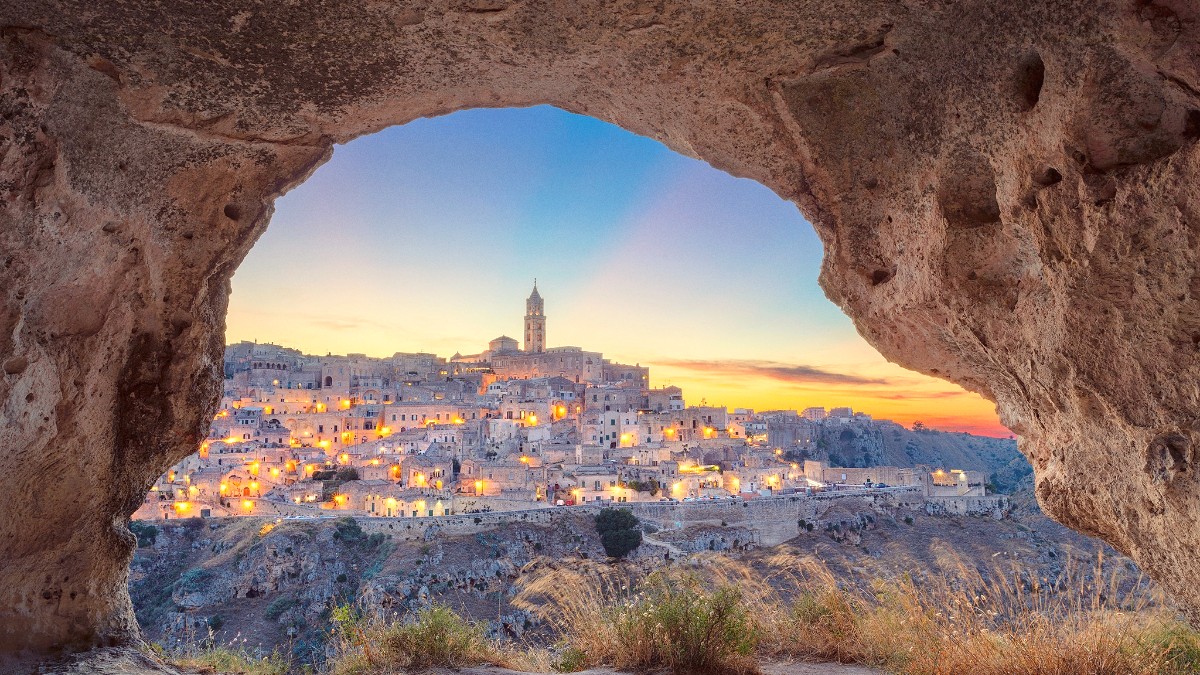
Basilicata, Italy
Basilicata's cuisine, including Matera's, is defined by "cucina povera," which translates to "peasant cooking." This tradition developed out of necessity, using readily available, inexpensive ingredients.
This style of cooking creates dishes that are simple, robust, and deeply flavorful, a direct reflection of the region's agricultural past.
Durum wheat (for pasta and Pane di Matera), legumes (fava beans, lentils, chickpeas), and high-quality olive oil are foundations.
Wild chicory, broccoli rabe, cardoons, and various seasonal greens are common. Lamb and pork appear in stews and cured forms.
Flavors are robust, earthy, and sometimes spicy with chili pepper (peperoncino). Wild oregano and thyme add aromatic notes.
"Little ear" pasta with sautéed turnip greens, garlic, and a hint of chili. A popular dish found in most trattorias.
A Puglian classic popular in Matera.
A hearty ancient soup with a mix of legumes and wheat. Traditionally eaten on August 1st.
Reflects Matera's "cucina povera" roots.
Crispy, dried sweet red peppers, quickly fried in olive oil. An iconic Basilicata ingredient. For regional cuisine ideas, explore Basilicata cookbooks.
Enjoy as an appetizer or crumbled over dishes.
Savory, ring-shaped crackers (Taralli) and seasonal desserts like Cartellate (fried pastry rosettes).
Aglianico del Vulture (red wine) and Matera DOC wines. Amaro Lucano is a popular local bitter liqueur.
Refined restaurants within the Sassi, offering modern interpretations of traditional cuisine. Expect higher prices and elaborate experiences.
Numerous trattorias and ristoranti in both the Sassi and Piano. Quality regional dishes with fresh, seasonal ingredients.
Pizzerias, paninoteche, and small osterias offer quick, inexpensive, and satisfying options. Markets sell fresh produce.
Matera's culinary scene strongly emphasizes local and regional Italian food.
International cuisine options are limited.
A few standard offerings like Chinese or Japanese restaurants might be found in the modern city.
Expect a focus on Italian specialties.
Dine directly within ancient cave settings for an unique ambiance.
Traditional, casual eateries with local dishes.
Simple, often family-run places with a limited, rotating menu.
Fresh Pane di Matera and local pastries.
Awareness of gluten-free ("senza glutine") options is growing. Many restaurants can offer gluten-free pasta or rice dishes.
Always communicate your needs clearly to staff.
Use translation apps or carry a dietary translation card in Italian to explain requirements. Mention "sono celiaco/a" (I am celiac) or "allergia a..." (allergy to...). Find a Translation card for specific allergies.
Clear communication is .
While awareness grows, always clearly state allergies like nuts, dairy, or seafood.
Inquire about kitchen practices, especially for severe allergies, as smaller kitchens may have limits.
Many restaurants in the Sassi are carved directly into ancient caves, creating an unforgettable meal setting.
Local eateries emphasize fresh, seasonal ingredients from the surrounding Basilicata region.
Many dining spots are run by local families, offering warmth and traditional hospitality.
Portions can be generous, especially for pasta dishes or main courses.
Consider sharing if trying multiple dishes.
Purchase a loaf of authentic Pane di Matera from a local bakery. Its dense texture travels well and tastes delicious with local cheeses or cured meats.
A perfect souvenir or picnic item.
The region produces high-quality extra virgin olive oil, central to Matera's dishes.
Beyond Cartellate, explore other seasonal pastries available in local bakeries.
Experience authentic Italian coffee at a local bar, typically standing at the counter.
Be aware that some smaller restaurants may have limited opening hours or close for a mid-afternoon break.